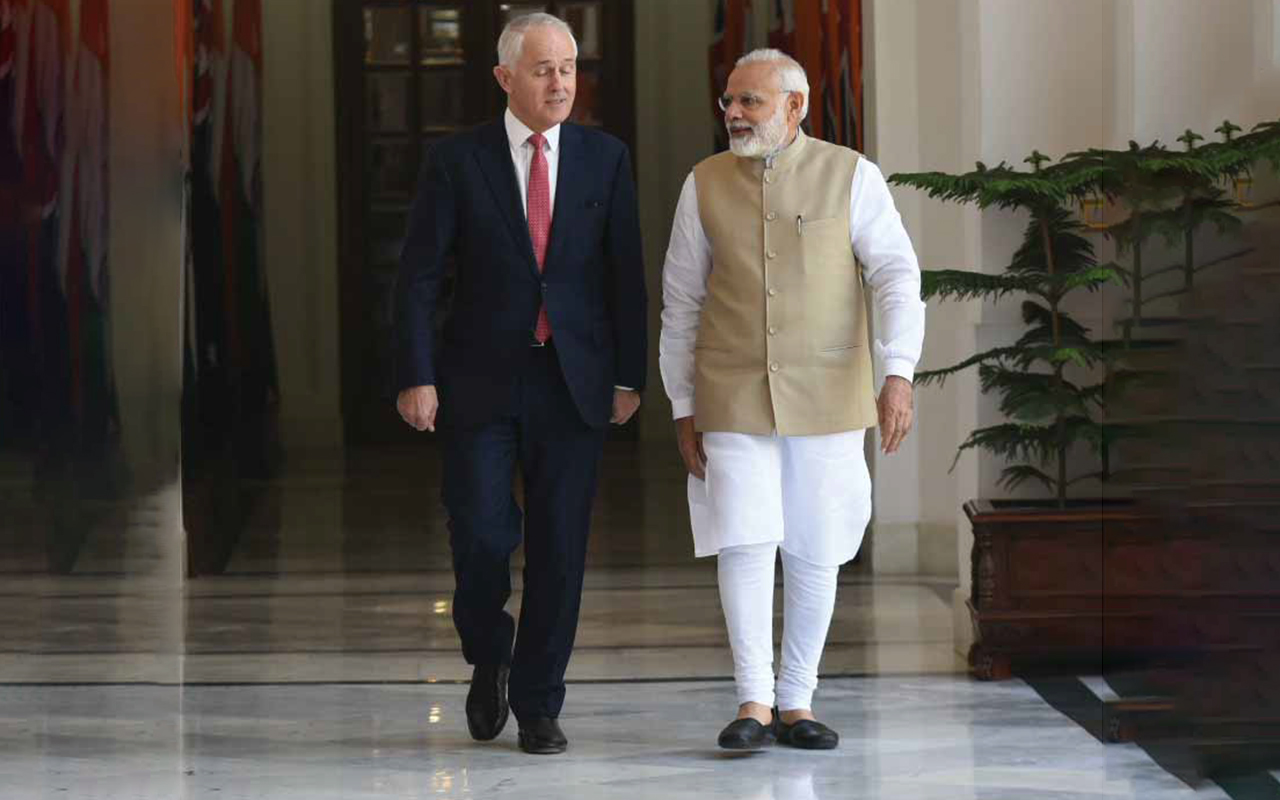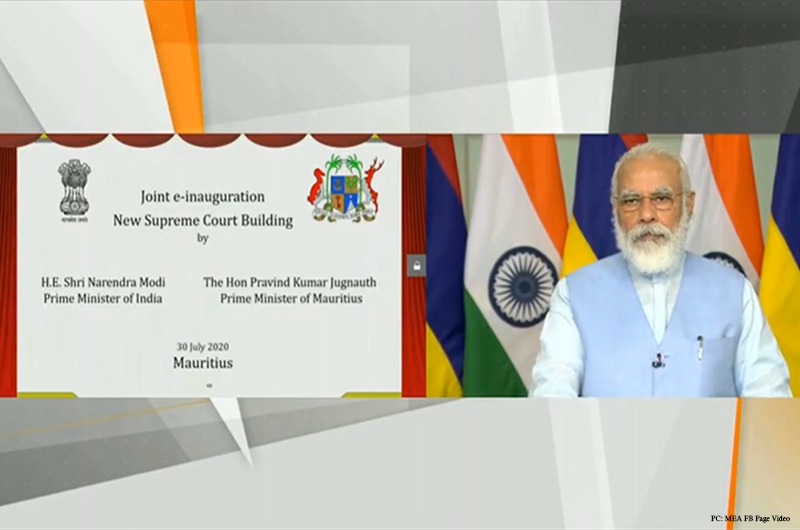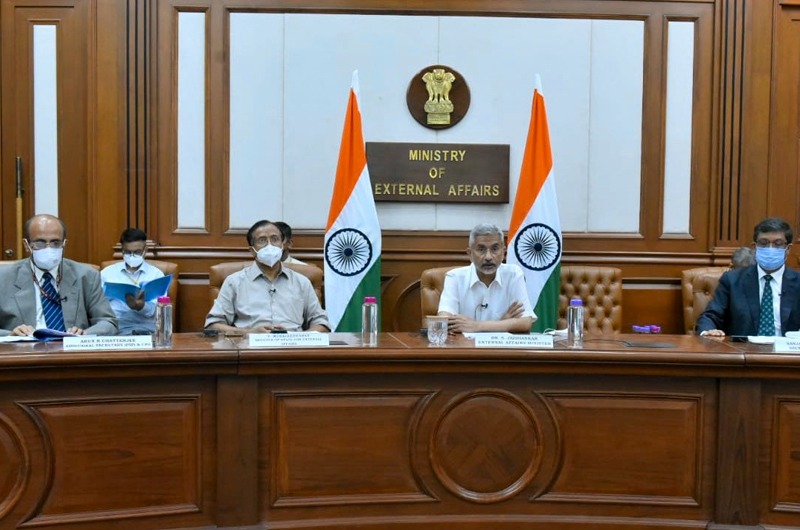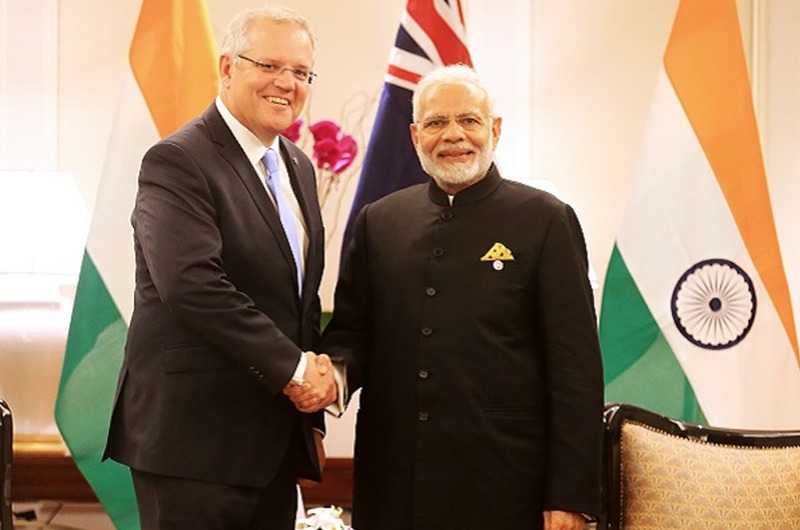
India’s rejuvenated thrust towards its neighbours, both the immediate ones and the extended ones, has widened the scope of relationship with several regional powers including Australia. Prime Minister Shri Narendra Modi has, on several occasions, expressed his willingness to augment New Delhi’s relations with the immediate neighbours.
He sent out invitations to all the South Asian heads of the States to attend his swearing-in as the Prime Minister of India in May 2014. The extended neighbours from the Asia-Pacific were identified as the second circle of foreign policy rapprochement when External Affairs Minister Sushma Swaraj mentioned about India’s proactive approach towards the region in Hanoi in the same year. In that context, renaming of the two-decade old ‘Look East Policy’ as ‘Act East Policy’ was reciprocated well by the region.
In 2014 itself, Prime Minister Modi visited Australia and was praised for his dynamic speeches as he alluded on the potential of bilateral relationship between India and Australia to maximise strategic gains for both the parties. Modi was the first-ever Indian Prime Minister to have visited Australia in 28 years. In this given background, this commentary is an effort to understand three important aspects of the bilateral relationship between Australia and India, namely, economic cooperation, security cooperation and cultural and people-to-people connectivity. This will help in understanding, in a nutshell, the challenges and prospects in the partnership between India and Australia.
Despite their common understanding on the maritime safety and security, regional security concerns, practise of democracies, Commonwealth bonding and passion for cricket, India and Australia’s bilateral relations have never been a very bright centre of foreign policy attraction for New Delhi and Canberra. After Canberra took the decision of withdrawing the ban on uranium sale to India, things started moving in a positive direction. The next round of optimism came when Prime Minister Narendra Modi visited Australia in 2014 and it was expected to be an icebreaker. This was a modest start. PM Modi elucidated that Australia ceases to remain on the margin of India’s foreign relations; rather, it is a major partner of India.
Definitely, India hopes to get benefitted from its improved relations with Australia as New Delhi aspires to become an enabler of peace and stability in the Asia-Pacific. Cordiality was enhanced in 2016 when Australia and India signed the civil nuclear deal, and now Australia is preparing to begin the sale of uranium to India shortly.
Australia’s economic cooperation with India is improving at a slow pace. The two way trade between India and Australia hovers around approximately $15 to $20 billion. India is the ninth largest trading partner of Australia and remains its fifth largest export market. India occupies 17th position in Australia’s foreign investment and for India, Australia is its 22nd largest investor.
However, in recent years, the economic cooperation between India and Australia has made a few progresses. In 2016, Finance Minister Arun Jaitley visited Australia with a high level business delegation and both sides signed a number of business agreements. In the same year, after long legal battle, India’s Adani Group’s much debated Carmichael Coal and Mine project, worth $21 billion, received an approval from the Australian government for beginning operations in Central Queensland. Besides this, Adani Group is also planning to develop and operate 1.5GW of solar power project in Australia within next fi ve years. Upon completion, this will be the largest solar power operator in Australia.
India and Australia are discussing about the Comprehensive Economic Cooperation Agreement (CECA) since 2012. Once implemented, CECA is expected to increase bilateral investments and goods and services trade between both countries.
Robust economic cooperation between India and Australia has the potential to help India in its quest for sources of energy, as the later has reserves of high quality coal, uranium and Liquefied Natural Gas (LNG).
Maritime security is another important aspect of India-Australia relations. The Indian Ocean binds India and Australia
together and hence, it is understood why both India and Australia are keen to preserve regional security architecture in the Indo-Pacific region and work together, both at the bilateral and multi-lateral levels to maintain peace and balance in the region. Australian Foreign Minister Julie Bishop, during her most recent visit to India, mentioned that littoral nations need to uphold the idea of free navigation in the seas and oceans in order to maintain their trading interests.
Related to the maritime security, is the defence and security cooperation. In the recent past, Australia and India have signed a number of agreements related to various matters of defence and security. In 2003, an agreement on counter-terrorism was signed, a Memorandum of Understanding (MoU) on defence cooperation was signed in 2006,
information sharing on defence intelligence was signed in 2007 and the Framework for Security Cooperation was signed in November 2014. These, along with the strategic partnership signed in 2009, have created passage for the bilateral partnership between the two countries. Followed by the 2014 agreement, the first ever bilateral joint naval exercise (AUSINDEX) between India and Australia was conducted in 2015, off the coast of Vishakhapatnam. The second AUSINDEX was conducted in 2017 off the coast of Perth in Australia. In 2016, the then Army Chief General Dalbir Singh visited Australia to deepen military-to-military ties between the two countries.
In the recent years, the cultural interactions and people-to-people exchanges between India and Australia have mostly been appreciated. In 2016, India organised Confluence India programme in several cities in Australia to demonstrate the vibrancy of Indian culture and heritage. The number of Indian students enrolled in Australian institutions is always on the rise. In 2016,
Indian students were estimated at 60,000 in Australia, making them the second largest group of foreign students in the country. Again in tourism, India is the eighth largest source of international tourists for Australia. Australia is home to around 450,000 Indians and Australian citizens of Indian origin comprise approximately 2 percent of the total population in the country. The huge untapped potential of this diaspora community needs to be exploited in advancing the bilateral relations between the two countries.
Besides the various sectors of cooperation at the bilateral level, both India and Australia share the same platform in East Asia Summit (EAS), Indian Ocean Rim Organisation (IORA), and Indian Ocean Naval Symposium (IONS) and several other multilateral forums with the common aim to achieve a stable and secured Indo-Pacific region. Formal and informal talks have been conducted to form trilateral cooperation involving India, Japan and Australia. India and Australia share common security concerns over China’s assertiveness in South China Sea too. After the 2016 ruling by the Permanent Court of Arbitral (PCA) on Philippines-China disputes over South China Sea, both Canberra and New Delhi issued separate statements urging the stakeholders to maintain the ruling as the international order in order to uphold peace and stability. India and Australia are members in China-led Asian Infrastructure Investment Bank (AIIB) and both countries need to examine the potential as well as challenges that emanate from the crosscontinental financial organisation which looks for bringing about an alternative global financial structure in the world as the Bretton Woods institutions failed to meet a few expectations of the 21st Century global order. Both India and Australia also share common platforms in the Regional Comprehensive Economic Cooperation (RCEP) and if it gets implemented, this will bring together almost 45 percent of the total global population and one-third of the global GDPs under one framework.
In the conclusion, it can be said that the bilateral partnership between India and Australia have seen various successes; however, they need to shoulder few more responsibilities together if they want to maintain regional security and stability. The relationship will only mature further as the time elapses.
By: Dr Sampa Kundu








